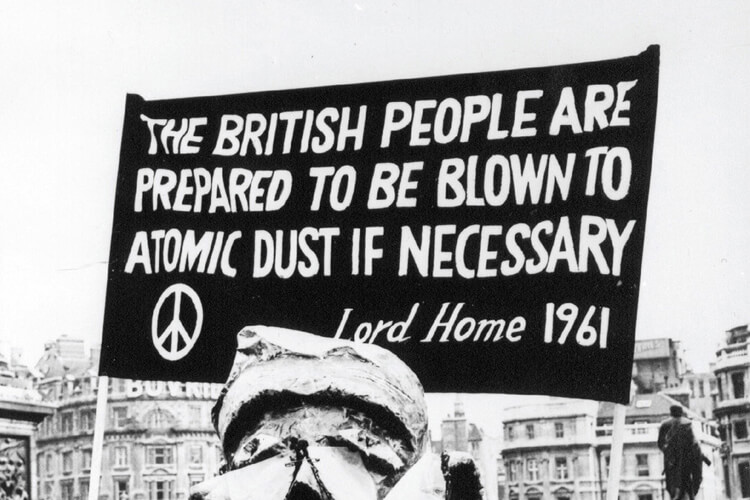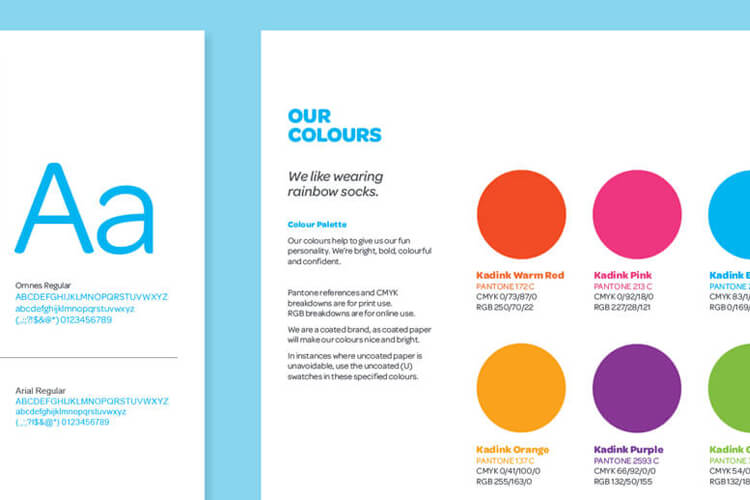Logo History
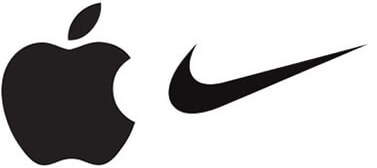
Many companies can be identified by their their logo faster than by name. Apple no longer need to write apple on their products. It's also hard to think of Nike, without seeing a tick. Throughout the twentieth century, businesses have used images and marks to identify themselves to their customer and to stand out from the ever-crowded business space.
Although logos and instant familiarisation through images seems like a modern concept, it is far from that. Even 15th-century royal courts used their own logos, slogans, and colour schemes through the power of uniforms, family crests and symbolism.
Ancient Logo History
Did you know?
The word ’logo’ comes from the Greek word ‘logos’ which means ‘word’.
Even before the court jesters wore branded uniforms, Around 600 BC the Ancient Egyptians truly set the trend for using imagery. Using hieroglyphics, a system using drawn pictures to represent sounds, they would identify and mark their possessions to claim them as their own. The Egyptian farmers would imprint signs on to livestock to identify ownership. Ancient Romans sometimes used different symbols as part of a magic spell to protect the animals from harm. Across the sea, the Greeks, Chinese and Romans would distinguish separate brick and pottery makers work using markings and stamps. Around 220 BC ancient China would stamp Chinese characters on to documents and art to prove identity and importance.
These branding techniques are the start of how we know and use branding today. Companies and individuals now assign their own brand name to their service or goods.
Logo History In Europe
To help traders and merchants in Europe show their guarantee for high-quality work in Medieval Europe, trademarks became commonplace. Merchants created their own personal marks, throughout the entire 13th century, which has arguably become known as the time in which trademarks were first brought in.

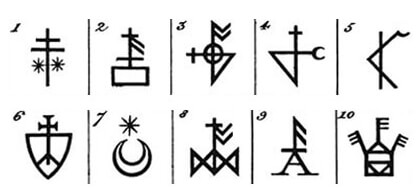
Merchant marks used by medieval merchants of the City of Norwich, England
Did you know, the leopard’s head, the hallmark of the Goldsmiths Company Assay Office, was first used in 1300 and has been used ever since?
The first legislation including trademarks came about in 1266, which the British Parliament passed. In fact, every baker had to use their own unique mark on the bread and goods that they produced under the Bakers Marking Law. It was in 1363 that silversmiths were legally obliged to mark their products. I am sure if you have ever owned any jewellery you will have noticed a hallmark engraved or stamped upon it. This then soon spread to the producers of porcelain whom had to mark their goods; display who manufactured it and establish where in the world it came from.

Back To The Monarchy
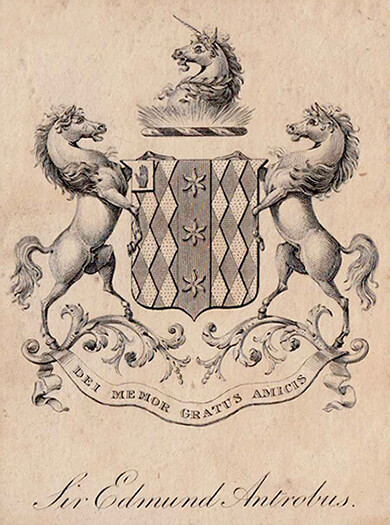
Antrobus family crest. Cheshire, England.
You will have seen various sets of family crests and royal arms throughout your education. This system is known as Heraldry and would have been used to assign certain social status and meaning. Using a mixture of imagery, colours and shapes, unique coats of arms would be created to distinguish between the statuses of different social standings.
We have King Richard II to thank for the array of different pub signs we pass on the high street. In 1393, he passed a law which required public houses to display a sign and his emblem, so that the examiner or tester of ales would know the location of each pub. From that point on, pub signs diversified to reflect the names of their establishments, this started a sense of brand loyalty in which drinkers would favour certain brewers over others. Sure, perhaps the imagery was not as enhanced as we have in this modern age, however, each sign was different from any other which started to pave the way for branding and logo design like we know it now.
Today, you don’t have to look far to find heraldic examples in modern logo design! A lot of football teams, car manufacturers and drinks companies still use a coat of arms in their logos.
Introducing the Printing Press
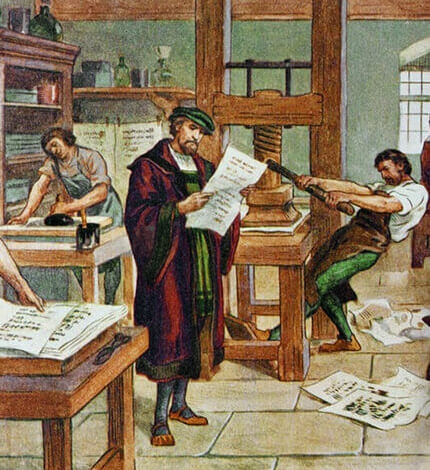
Stepping into 1440, the printing press was first invented by Johannes Gutenberg. This started the production of printed materials which over time became more and more common. This then started the need for authors and printers to claim ownership of their own handiwork. Logos were used to identify printers works by the late 15th century.
As the popularity of printed materials started to grow, the introduction of newspapers soon occurred. The first newspaper was first printed in the mid-1600’s and even had a regular circulation with an ever-growing readership. It did not take long for entrepreneurs to use advertisements to fund newspapers. With the growth of advertisements, this made businesses want to stand out even further and ensure that their potential customers knew the difference between them and their competition.
The modern logo
The very first ever registered trademark was registered at The Trademarks Registration Office on 1st January 1876. It was registered by Bass & Co. Don’t believe us? Check it out HERE
Logos were used as business tools due to the need for simple identification of different businesses. Have you ever heard of ‘Shell’? Sure you have, I am sure you are picturing one of their tankers as you read this. But did you know that they were founded by Marcus Samuel in the 1800’s who started his enterprise by selling antiques and soon after boxes of oriental shells? As his business grew, he started to trade in kerosene, jewels and then oil. It did not take long for his business to become known worldwide and eventually, in 1897, it became the Shell Transport and Trading Company. In 1904 shell started using the Pecten (Scallop) shell as their logo. The scallop seashell has evolved over the years and is very distinguishable.
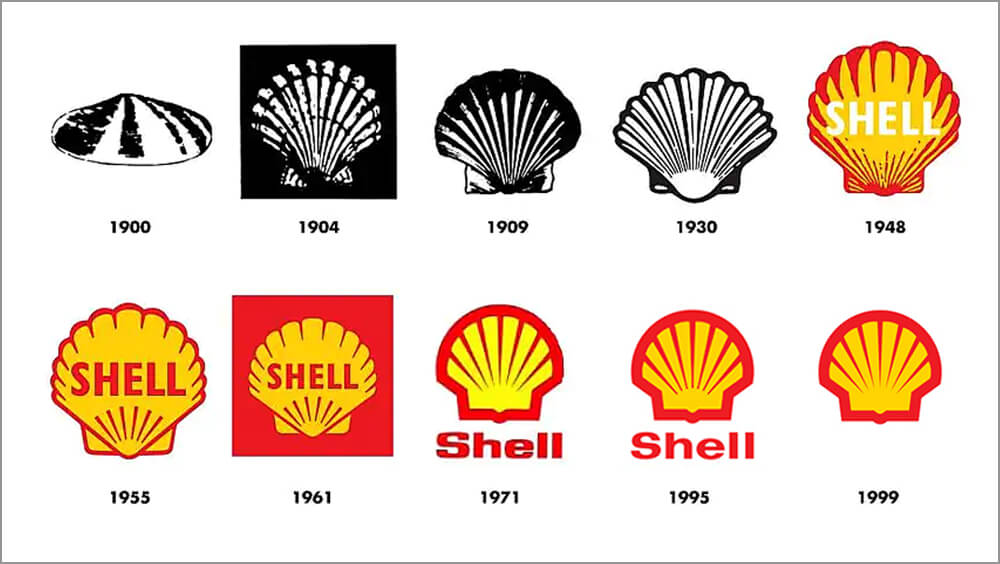
In the 1950s companies soon realised just how much impact symbolism could have on their businesses and brand awareness. Business owners soon started to invest a lot of money, time and effort into branding their businesses and choosing the right logo to illustrate their business.
This eventually led to logos becoming a must-have feature for every business. It soon became known that if you want people to remember you, you have to have a great logo. Businesses started to opt for images that were easy to recognise and easy to distinguish with or without any wording paired with it.

How the Starbucks logo evolved over time.
We are still a part of living history and we are facing years ahead of us in which logos will continue to change and shape the way we view them. Undoubtedly the principals of logo design will continue to evolve, just like they have done for the centuries before us.
